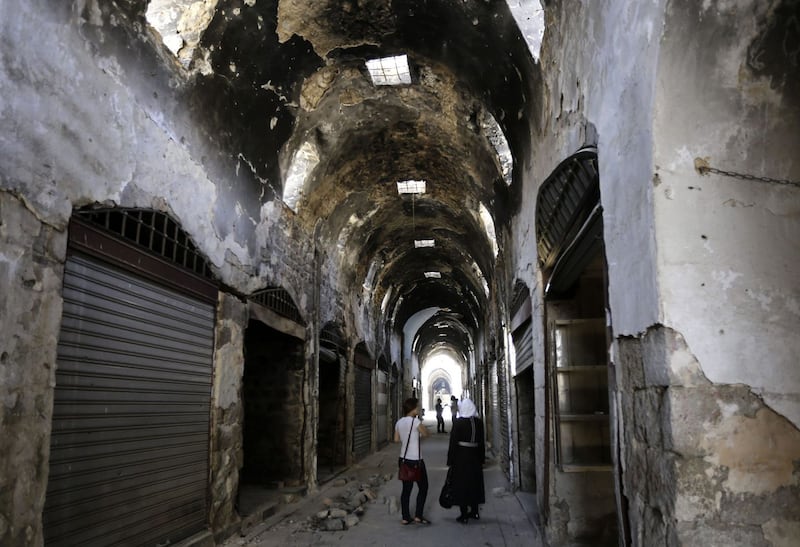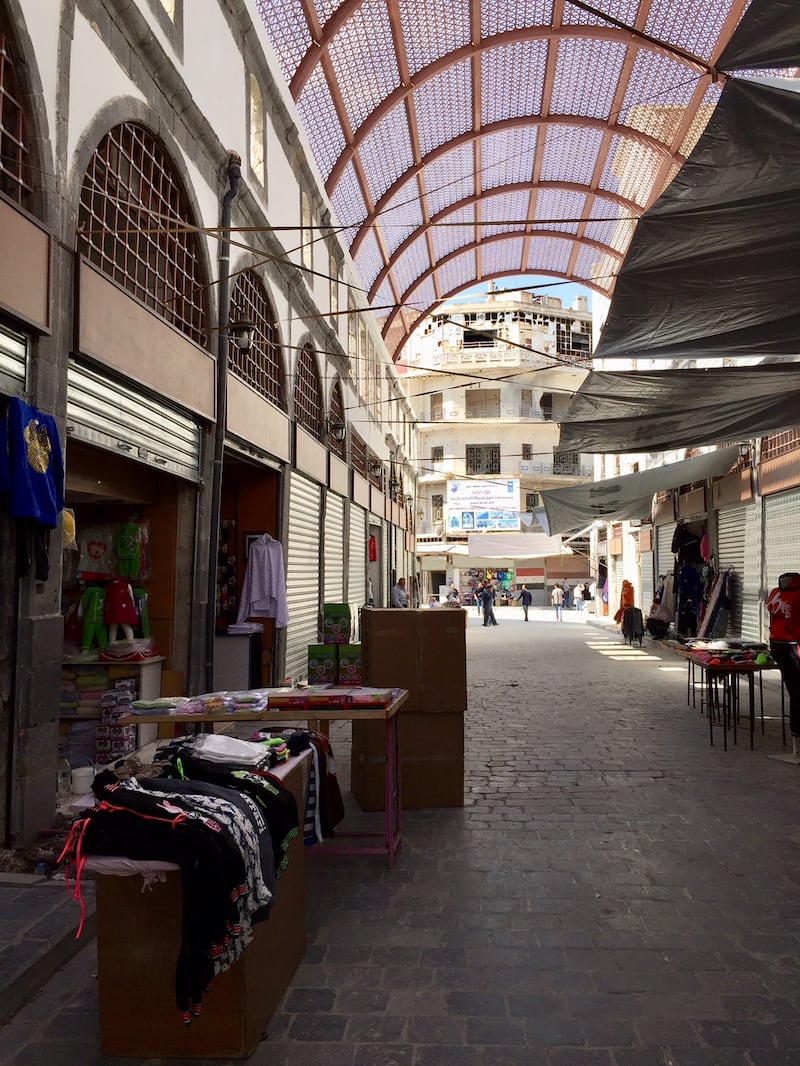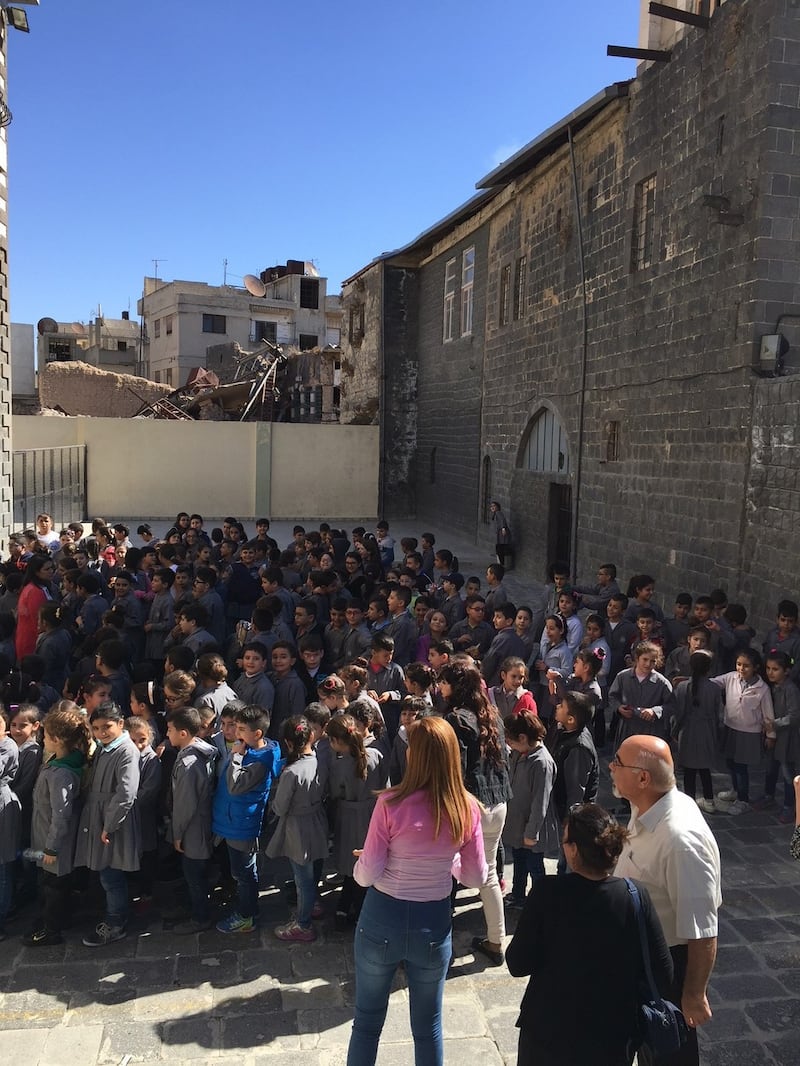Homs is buzzing with life and light. The streets seethe with traffic, shops and restaurants are doing brisk business, and lights burn day and night as if to make up for years of rationed outage.
When you ask residents of this heavily bombarded city about electricity, they grin and say "24-7". Before the Syrian war, Homs was the country's third city, with a population of 800,000. Families are returning to recoverable quarters of the battered and blasted Old City, where 150,000 once lived, but 25,000 now dwell.
Here, government troops fought the Free Syrian Army and the al-Qaeda-linked Jabhat al-Nusra (now Jabhat Fatah al-Sham), for three years until May 2014, when fighters were evacuated under a deal monitored by the UN.

In the Old City, the partially restored 3,500-4,000-year-old souq (marketplace), its structures dating to the 13th century, is open for business, stocked with clothing and food items. Samer Zarour, a third-generation owner – “100 years in my family” he boasts of his business – displays brightly coloured nightdresses, socks, and shirts along with bottles of cooking oil and fat white bags of sugar.
He opens from 10am till 8pm. War drove him from the souq and his home in the totally devastated Khaldiya neighbourhood, to a safer district where he settled and opened another small shop, now run by his brother. Syrians have been merchant entrepreneurs for millennia.
“I sell when people walk through the souq on their way home from work between six and seven. These days, people just come to walk. When it was dark and deserted, they were scared. Now there is activity in the street,” he says.
“The souq is a meeting place. It has changed the life of this part of the city . . . People ring relatives in Egypt, in Turkey, and urge them to come home. Restoring the souq was a very good idea.”
Children trudge past, bent under the weight of school books in backpacks. Boys whizz by on bikes; women walk from shop to shop checking out prices.
A widow with no children, Hissn al-Safi says her husband died during the war and left her the shop, where she has a small stock of clothing. While the UN Development Programme provided the funds for this pilot project, meant as a model for other areas destroyed during the conflict, conditions remain far from ideal.
“The work stopped at the [metal] shutter. We have to fix the inside. There is no electricity or water. We have to put in windows before winter,” she says.
While the cash-strapped government has pressed manufacturers to provide goods cheaply, Damascus gives no other help for people struggling to stay afloat.
Business is better
Although trained as a chemical engineer, Zeki Nabhan has taken over his parents’ shop, once a soap factory. His stock includes locally made bars of olive-oil soap gently perfuming the dim interior. “Business is better day by day,” he says.

Syria's rehabilitation is paced differently in every city, town and village. The government's focus is on clearing rubble and ruins and restoring security, water, electricity, roads and schools. United Nations agencies provide humanitarian aid and funds for schools, hospitals, and projects like the souq in Homs.
The Homs project has relaunched business here and is a social success, but the way the reconstruction is being carried out disappoints purists. The original plan was to restore the souq, which comprises up to a fifth of the Old City, as it was during the latter years of the Ottoman empire.
A team of young architecture graduates of Homs University was assembled, rubble was quickly cleared, repairs were made, the bullet and shrapnel-holed roof was replaced with a graceful vault, walls were painted and ribbed metal shutters were installed.
But cement is intruding where it does not belong, and black stone street tiles are giving way to cheap modern cobbles. The department of antiquities, charged with ensuring the work is done properly, has been sidelined by UN and local officials.
Since warfare in the Old City has ended, the battle for the cultural and historical integrity of the souq and scores of traditional homes has begun.

Original glory
By contrast, the handsome buildings of the Ghassaniya, the girls’ school founded in 1894 by the Orthodox Church, have been returned to original glory. When the school’s owner, the Orthodox patriarchate, finds money, other buildings, including a theatre built in the 1930s, will be restored.
Boys and girls aged from three to 18, Christians and Muslims, residents of the Old City and elsewhere in Homs, gather here as they did before the war. Their numbers have risen from 217 in October 2015, when this campus reopened. Now there are 1,000 here and at another location. Once the children are seated at their desks they greet me with “Good morning” and “How are you?” in English, taught from elementary level. French comes later.
The school must deal with traumatised children and teachers who receive no specialist help, says English teacher Majd Trabulsi.
“Our mentality has changed since the war began. Before, we all lived together. Today, some are afraid of each other. They have lost family members,” she says, before pausing: “We never talk about what happened during the war.”

Reconstructing buildings is one thing; rescuing survivors is another. And reconstituting communities is a third, essential task. Wafa Mahmoud Yusif (39), and her son Walid, aged 14, are pioneering this in a small shop on a street with three other occupied houses. It is in a nearly deserted neighbourhood in the ghost suburb of Baba Amr, where, in 2012, one of most notorious battles of the war took place.
Her husband was beaten to death and her elder son, a soldier, was killed; her daughter (17) lives in her family village in the countryside.
Walid, small for his age, goes to school, plays football, plays with a cousin whose family also moved back, studies English, among other subjects, and wants to be an engineer.
Yusif owns the house and shop, stocked with biscuits, sugar, tea, and cigarettes, and receives a small pension (about €25 a month). Sales average a dollar a day, she says.
She is a woman on her own in a patriarchal society. She is determined to reclaim her place in this devastated community and revive it. “I hope it’s like before,” she says.




















